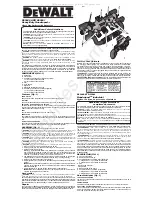
8
05.01
8.7 Circuit examples =1 to =9 with SIMODRIVE 611
8-292
©
Siemens AG 2012 All Rights Reserved
SIMODRIVE 611 Configuration Manual (PJU) – 02/2012 Edition
Circuit example =7 ”Limit switch, limitposition monitoring”
Normally, the end position (end stop) of the traversing range of the axes in the
machine is monitored using software limit switches; these become active after
the reference point approach. If, in a fault situation, a software limit switch is
passed, and therefore a hardware limit switch actuated, then contactor =4–K21
is de–energized (opened) via the interlocking circuit, terminal 81–82 in the
EMERGENCY STOP circuit. The drives are braked at the current limit and are
then stopped.
However, electrical braking of an axis is only effective if there is an appropriate
distance for the braking travel between the hardware limit switch and the me-
chanical end stop of the axis.
The actuated end position limit switches can be decoded using PLC inputs. In
the setting–up mode, the axis can be moved away in the opposite direction us-
ing key–operated switch –S13 and button =5–S11 – ”agreement”.
Circuit example =8 ”Armature short–circuit braking”
Armature short–circuit braking is only possible when using permanent–magnet
motors and is used, for example, when passing end position limit switches,
when the power fails, for fault signals or EMERGENCY STOP with some delay.
When a software limit switch is passed, the fault/error is often in the NC, PLC or
in the drive module itself. Electrical braking beyond the limit position limit
switches according to circuit =8 is therefore no longer possible. For critical
drives, e.g. vertical axes, in cases such as these, emergency braking is pos-
sible using armature short–circuit braking or optionally using a fast shutdown
with a holding brake implemented with the appropriate hardware.
The braking torque for armature short–circuit braking is optimized using the
additional braking resistor in the motor circuit.
!
Caution
Short–circuit braking without a braking resistor can result in partial
de–magnetization of the motor.
Application/
functions
Application
8 Important Circuit Information
05.08
















































